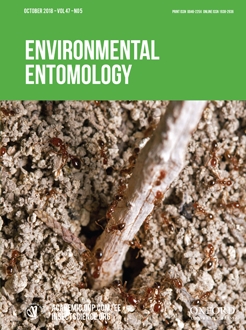Heavy metal contaminations have attracted increasing concern worldwide due to their potential damages to the whole ecosystem. This study investigated the heavy metal–accumulation and excretion in, and food utilization of the gypsy moth (Lymantria dispar) larvae that were fed with leaves plucked from poplar seedlings (Populus alba berolinensis) grown in either noncontaminated soil (control), Zn-contaminated soil (500 mg/kg), or Pb-contaminated soil (500 mg/kg). Our results showed that excretion of heavy metals via insect feces and exuvia is an effective approach to reduce the internal Zn and Pb concentrations, and result in the decrease of Zn and Pb concentrations in the gypsy moth larvae with the increased larval age. In addition, the gypsy moth larvae seemed to have a strong homeostatic adjustment mechanism [between approximate digestibility (AD) and efficiency of conversion of digested food (ECD)] that maintains a stable level of “efficiency of conversion of ingested food (ECI)” regardless of heavy metal (Zn or Pb) contaminations or not, except the fifth instar larvae in which the increase in AD was insufficient to compensate for the decrease of ECD. These results suggest that heavy metal excretions could help the gypsy moth larvae cope with Zn or Pb stress, and the increased digestion of food could meet their energy requirements for both detoxification and growth. However, further increase in Zn or Pb exposure time seemed to inhibit the larval food utilization.
How to translate text using browser tools
19 June 2018
Heavy Metal Accumulation/Excretion in and Food Utilization of Lymantria dispar Larvae Fed With Zn- or Pb-Stressed Populus alba berolinensis Leaves
Dun Jiang,
Xiao-Wen Dong,
Shan-Chun Yan
ACCESS THE FULL ARTICLE
It is not available for individual sale.
This article is only available to subscribers.
It is not available for individual sale.
It is not available for individual sale.

Environmental Entomology
Vol. 47 • No. 5
October 2018
Vol. 47 • No. 5
October 2018
detoxification
heavy metal stress
Lymantria dispar
nutritional index
Populus alba berolinensis




